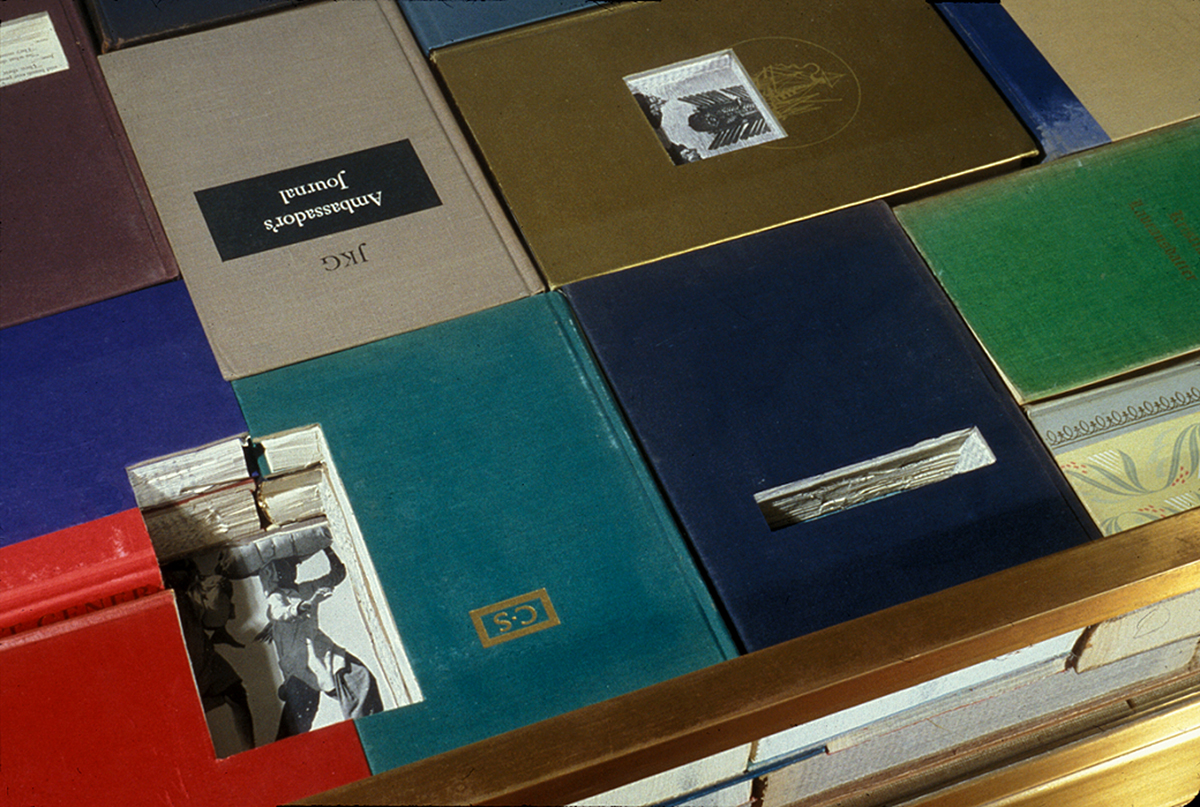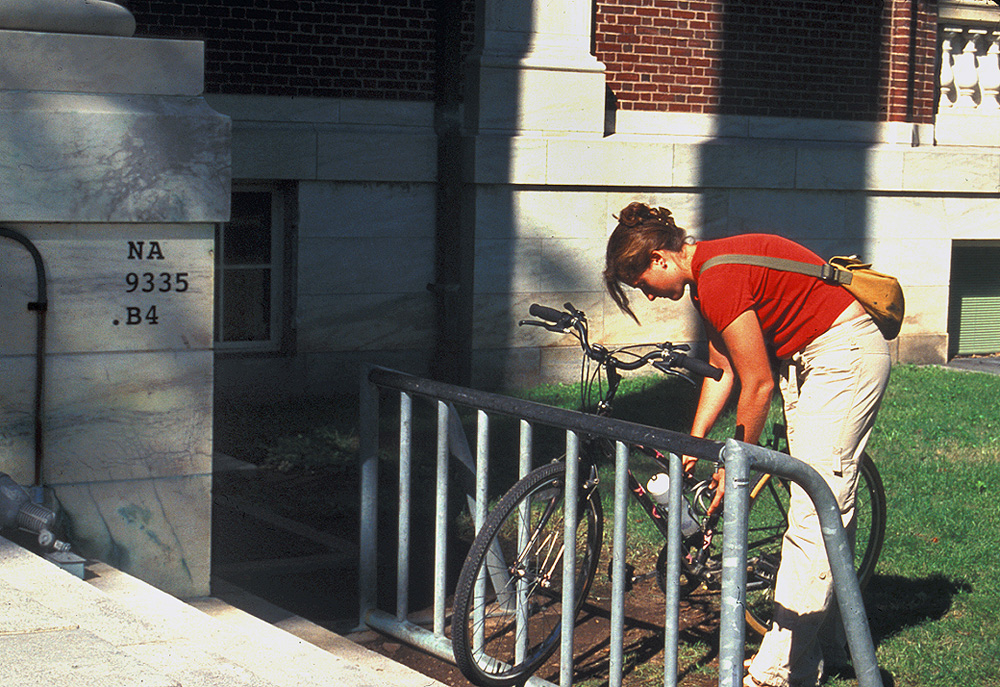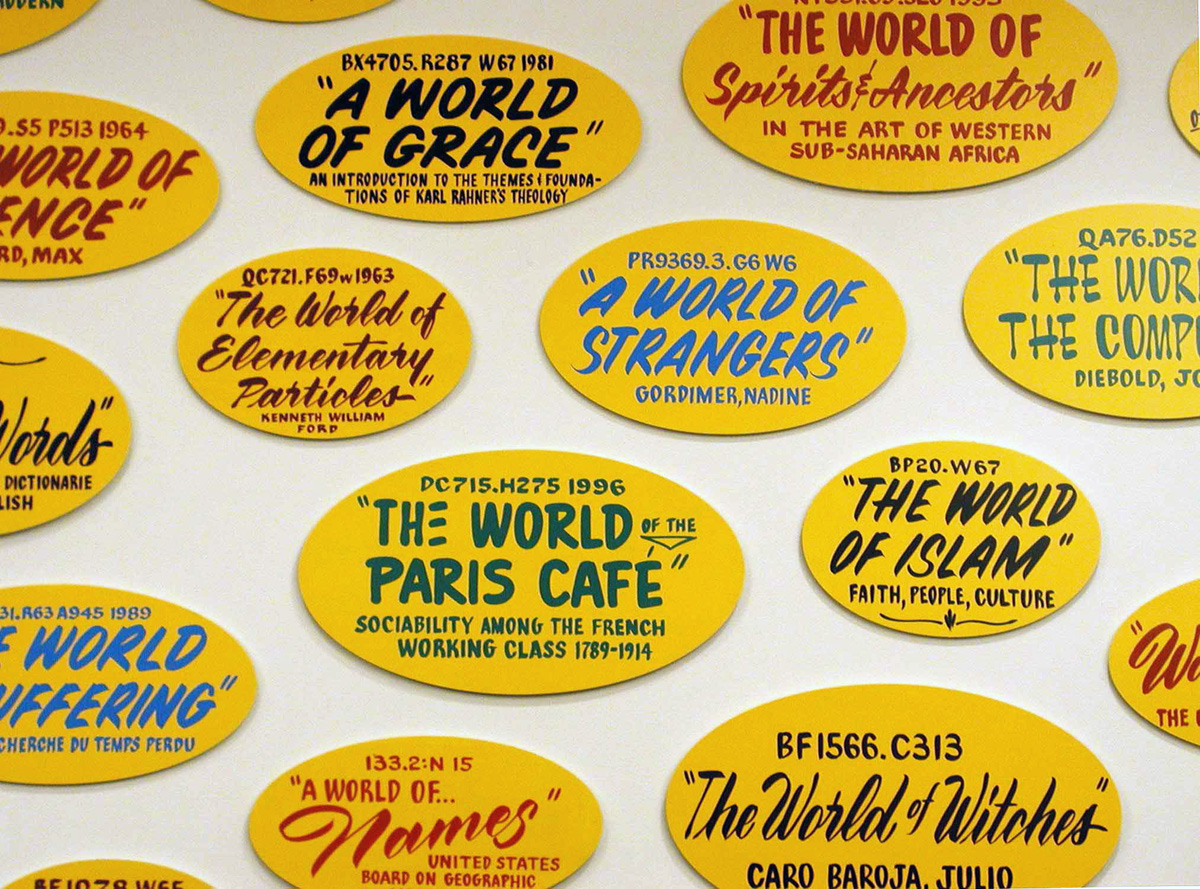2003
2 cases, each 40″x72″x28″
Excavations uses the typical glass display cases used to exhibit books in libraries everywhere. These cases usually open a book to exhibit one selected spread, leaving the rest of the book frustratingly inaccessible. In Excavations, we extend that idea to suggest the whole of the library’s treasure trove. Layers of books fill the cases completely, forming a geology of texts, sliced at the edges to fit the case. Within this, various locations have been roughly excavated to find images and texts—loose ends. There are layers upon layers of sediment, a whole history of human endeavor and thought in that ground. We commit an act of archaeology, digging to take samplings—leaving all of the rest undiscovered, buried forever.
- Excavations (each case 40″x72″x28″)
- Excavations (detail)
- Excavations (detail)
- Excavations (detail)
- Excavations (detail)



